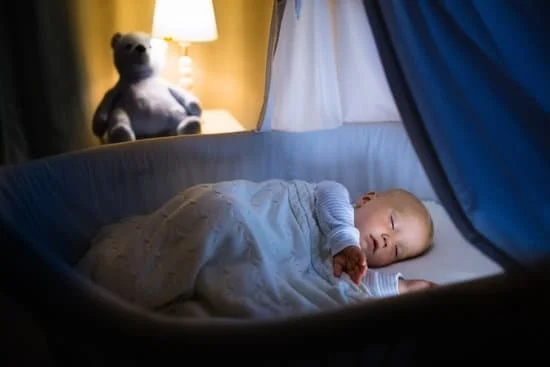
Not according to the Academy of Sleep Sciences! A 2018 article in the Journal of Clinical Sleep Medicine, the official publication of the Academy of Sleep Sciences, recommended that babies should receive “essentially no light exposure at night.” Let’s break down why this might be.
- Circadian rhythm is the internal 24-hour clock that helps regulate sleep and virtually every physiological function in the body, from temperature to hormone secretion. Entrainment to (synchronization with) the daily environmental light cycle is a critical contributor to how it is set and operates.
- Aligning physiological function to natural light conditions was a big evolutionary advantage (e.g., humans were more likely to be prey during the dark, making night an excellent time to lay low). Today our physical and mental health remains deeply entwined with “diurnal” (day/night) circadian rhythm.
- Babies are born with a weak circadian rhythm, but the infant eye’s detection of light helps program the circadian central clock (located in the hypothalamus), which then sends “time-of-day” lighting cues to peripheral clocks located elsewhere in the brain and most body organs to regulate their own systems.
- By 10-16 weeks, infants’ circadian rhythm is growing more robust, with cortisol, melatonin, and body temperature showing circadian regulation and sleep becoming more diurnal (more at night than during the day).
- What could get in the way? Artificial light, which lets us operate independently of the natural light cycle. A large body of research suggests it is disrupting our circadian clock with impacts ranging from increases in obesity and other diseases to depression and sleep disorders. And studies suggest even small amounts of evening light – such as from a night light or outside room – can cause issues.
- Adult, child, and baby studies (the last mostly in the animal world) have raised scientific concern that infant exposure to light at night could misalign their circadian rhythms just as they’re getting set, with potentially lasting developmental costs. Research continues (Is red light safer? Can babies handle small amounts?) but, for now, the path of least resistance – and least potential harm – seems to be keeping the nighttime environment as “as dark as possible” whatever your age.
